
Recently, Callies Performance Products and Energy Manufacturing struck a deal with FCA to cast Gen II Hemi and wedge blocks to fill “a serious lack of supply for both blocks.” While it is fantastic to have new castings and a host of new supporting components produced, Mopar Connection had an interest in what castings are currently available and from whom. We contacted Bill Mitchell of Bill Mitchell Products (BMP), Richard Bradshaw of Bulldog Performance, Ken Lazzeri of Indy Cylinder Heads, and Heath Norton of Callies Performance Products about the current block offerings of each company.
To keep the costs down and to allow the castings to fit into production vehicles, the manufacturers cast their blocks to accept most of the Original Equipment Manufacturer (OEM) parts, positioned in the factory locations. Examples of the components are the starter, oil pump, engine mounts, fuel pump, dipstick, oil pan rails, and cylinder heads. All the manufacturers have improved the block oiling systems and have expanded the cooling capacity. Each company utilizes screw-in core plugs in their aluminum blocks. It is advisable to contact the companies for additional block details not covered in depth in this editorial.
Above left: Bill Mitchell Products (BMP) designs Hemi blocks with the factory deck height, a cylinder bore of 4.250- or 4.500-inches, and a stroke of 4.500-inches. The casting can accept a maximum bore size of 4.560-inches and a stroke up to 4.750-inches (with additional clearance machine work). All the BMP blocks come standard with Bronze lifter bushings. Above right: BMP casts Hemi and wedge blocks, and these are fresh from the foundry. The wedge blocks have the engine mount ears cast into the blocks. This pallet of blocks has three wedges and one Hemi on it. The blocks are cross-bolted on the front four main caps with ARP hardware.
Bill Mitchell Products (BMP)
At one time, BMP owned World Products. World designed cast iron and aluminum versions of the Gen II block approximately twelve years ago. Mopar Performance purchased the iron version tooling and then contracted World to produce the Mopar blocks. This arrangement lasted about four years until the two parted ways. Mitchell disclosed, “World kept the aluminum tooling and continued to make blocks until some recent foundry changes. We are now just getting this block up and running again after those changes.” The new foundry is a modern, state-of-the-art facility. Taking advantage of the short downtime, BMP made modifications to the tooling to increase the features of the block castings. All the BMP castings are available as an aluminum version.
BMP’s block castings are available with a rough bore of 4.250- or 4.500-inches and a stroke of 4.500-inches. The castings accept a maximum bore size of 4.560-inches and a stroke up to 4.750-inches with additional clearance machining. The blocks employ a cylinder wall thickness no less than 0.200-inches of aluminum behind the replaceable ductile iron sleeves. The block can be cast with a raised camshaft design and accepts machining for a 60mm cam bearing. The deck height is the factory 10.720-inches. “The blocks require honing of the cylinder and lifter bores, a line hone of the mains, and machining the finish deck height,” confirmed Mitchell.
Above left: The design of the BMP blocks allows them to work with all the factory components, such as water pump, oil pan, dipstick, cylinder heads, etc. The blocks have a cylinder wall thickness of more than 0.200-inches of aluminum behind the replaceable ductile iron sleeves. Above right: The block can be cast with a raised camshaft design and accepts machining for a 60mm cam bearing. All the core plugs are a screw-in design. The factory or an aftermarket distributor will fit and operate correctly in the BMP block. For maximum strength, every BMP block casting utilizes 357-T6 aluminum. Each BMP block is designed with cross-bolted nodular iron main caps and use the factory rear main seal. After April 2020, the blocks will be available with billet steel caps.
BMP uses a factory rear main seal, and as after April 2020, the blocks will come with billet steel caps. To cover the Mopar purists and the drag racers that may put a Powerglide behind the block, BMP offers a block drilled to accept Mopar or Chevrolet transmission bolt patterns. Mitchell conveyed, “For added strength, the BMP casting uses 357-T6 aluminum rather than the typical 356 aluminum. The weight of our aluminum blocks with a 4.500-inch bore tips the scales at 135lbs.” All the blocks come standard with Bronze lifter bushings, and the blocks are cross-bolted on the front four main caps with ARP hardware.
How much horsepower (hp) can the castings withstand? Mitchell declared, “This is a loaded question, which gets asked every day. You can’t just throw a number on a block or any part. Parts don’t just fail at a given horsepower. Your tune-up, application, and load are huge factors in determining maximum HP thresholds. However, we have feedback from customers running over 2000hp.”
Above left: Bulldog Performance currently offers a cast-iron block. A Bulldog Performance block cast in aluminum will arrive this spring. Both blocks have the first four mains cross-bolted. The main caps are nodular iron or billet if additional strength is required. Above right: Bulldog Performance can machine the block for a 55mm or 60mm camshaft bearing, and Bulldog can cast the block with a raised camshaft design. The Bulldog Performance cast iron blocks are NHRA Stock and Super Stock legal. Bulldog designed their blocks to operate with the factory parts.
Bulldog Performance
Bulldog Performance has offered the Gen II Hemi block for about two and a half years. They currently provide a cast-iron block with an aluminum version of the casting to arrive in May 2020. Bulldog’s cast-iron block utilizes the factory-type tap-in core plugs. The casting is NHRA legal for Stock and Super Stock eliminator.
Bradshaw testified, “Quite a few (customers) have bought a block from me for drag racing. They are tight-lipped about any advantages they have found with the blocks.” The castings operate with the factory parts that each competitor must use, as required by the sanctioning body.
Above left: The Bulldog cast-iron bore sizes are rough cast at 4.245- or 4.495-inches, and a 4.625-inch stroke fits into the block without modifications. The block can accommodate a 4.750-inch stroke with additional machine work. The deck height is 10.720-inches (stock Hemi/440), or a deck height of 9.98-inches (stock 383/400) is also an option. Above right: Bulldog Performance designed a rear main cap with the rear main seal incorporated into it. This integrated rear main seal provides exceptional sealing, which reduces the pesky oil drips from the transmission bell housing area. Bulldog has a billet main cap option for additional strength.
Bulldog Performance offers 4.245- or 4.495-inch bores with a maximum bore of 4.600-inches with their cast iron and aluminum blocks. Bradshaw stated, “A 4.625-inch stroke fits in the block, and a 4.750-inch stroke operates with some additional machine work to the block.” At a 4.500-inch bore, Bulldog keeps the cylinder wall thickness at 0.250-inches, and the aluminum casting has slip-in iron cylinder liners.
The deck height is the OEM measurement of 10.720-inches (a 383/400 block deck height of 9.98-inches is also an option). Bulldog Performance can machine the aluminum block for a 55mm or 60mm camshaft bearing, and the block can accommodate a raised camshaft design. Bulldog offers a special seal incorporated into the rear main, and there is a billet main cap option. “I know of a twin-turbo setup with our block making about 2700hp,” Bradshaw declared.
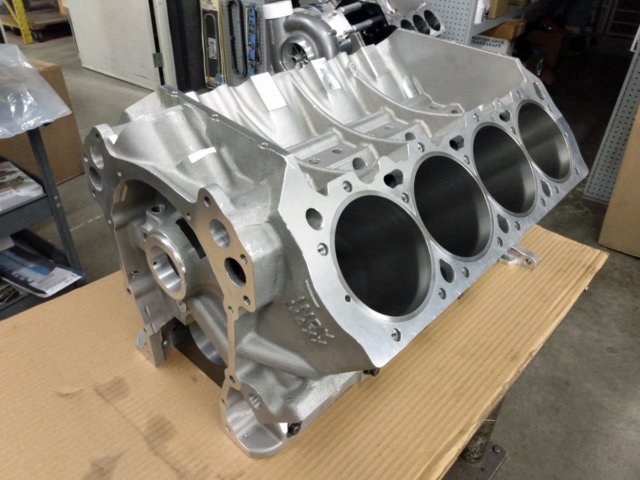
Above: This is an Indy Cylinder Heads Indy Maxx aluminum water block. The Indy Maxx aluminum block can be purchased as a solid block as well. The blocks feature Siamese dry sleeve construction with a sweat sleeve installation, and with a 4.500-inch bore, there is a 0.300-inch thickness between cylinders. The block sleeves are available in different thicknesses.
Indy Cylinder Heads
Indy Cylinder Heads has been casting and machining their own Gen II Hemi and wedge blocks in-house since 1995. Currently, they offer the Indy Maxx aluminum block in water and solid designs. Available soon is the Indy Maxx aluminum “X block” with a solid or water version. All the designs are available as a Hemi or wedge, and the blocks feature Siamese dry sleeve construction with a sweat sleeve installation. With a 4.500-inch bore, there is a 0.300-inch thickness between cylinders, and each block is available with different sleeve thicknesses.
The position of the camshaft is in the standard location or at an optional 0.250-inch raised location. The blocks have three cam tunnel options (standard, 55mm, or 60mm). Steel billet main caps and 1/2-inch main studs are used on the Maxx block, while the Maxx X block utilizes 9/16-inch main studs with huge (7570) billet aluminum main caps. All the blocks come with 1/2-inch cross bolts on all five caps and have added support ribs in the valley.
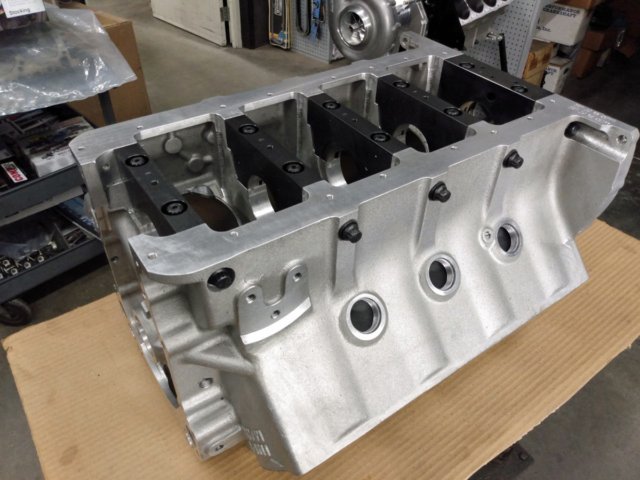
Above: This Indy Cylinder Heads Indy Maxx aluminum water block has billet steel main caps. The position of the camshaft can be in the standard location or an optional 0.250-inch raised position. The blocks have three cam tunnel options (standard, 55mm, or 60mm). Steel billet main caps and 1/2-inch main studs are used on the Maxx block. Additionally, the mains are cross-bolted with 1/2-inch bolts on all five mains.
The standard Indy Maxx block is available in the 400-deck height of 9.98-inches, and the Hemi/440 has a deck height of 10.720-inches. The mains are available in either 2.750-inches (440 mains) or 2.625-inches (400 mains). Strokes range from 3.38- to 5.00-inches, which means engines from 383 to 655 cubic inches. The bores range from 4.250- to 4.600-inches. Each block features an isolated main oil gallery to prevent oil leakage around the lifters, and there is a pushrod oiling option.
The blocks come with camshaft bearings installed, and the mainline finished. There are options to complete all the machine work (bore, plate hone, square deck, stroke clearance, O-ring groove the deck). A fully machined water block weighs 133lbs, and the solid blocks tip the scales at 155lbs.
Lazzeri stated, “In any big horsepower engine, you must first have the proper parts for the intended use, and most importantly is the proper tuning. As a guideline, we recommend the water block for the 500 to 1800hp range, the solid block 1500 to 2500hp range. Although not yet tested, we expect the new Indy Maxx aluminum X block to be a game-changer at 2500hp plus.”
Above left: Available soon, the Indy Maxx aluminum X block. It will be available in a solid or water version. The block casting has additional reinforcement, which is visible in the valley area. Each block features an isolated main oil gallery, which prevents oil leakage around the lifters. Pushrod oiling is an option with the Indy blocks. Above right: The Indy Maxx X block utilizes 9/16-inch main studs. The block employs huge 7570 billet aluminum main caps for maximum strength. The Indy Maxx X block, just like the Maxx block, uses 1/2-inch cross bolts on all five caps. Indy Cylinder Heads has not tested the Indy Maxx X block, but 2500+ horsepower is the expectation.
Callies Performance Products (Callies) & Energy Manufacturing Ltd. (Energy)
In January 2020, Callies and Energy announced a licensing agreement with Fiat Chrysler Automobiles (FCA) to manufacture and distribute the 426 Hemi and the 440 wedge cast iron blocks. The arrangement stipulates that Energy produces iron blocks (and cast iron and aluminum cylinder heads) while Callies (a sister company) will manufacture rotating assemblies as well as supportive components. Callies will act as the sales point for all the new castings.
The FCA blocks will all carry Mopar part numbers, and the castings use the original OEM tooling and Mopar engineering data. However, the tooling will not produce a questionable 1970s block, but rather, the tooling and molds are a heavy-duty version owned by FCA, in which Bill Mitchell provided valuable input.

Above: Callies and Energy announced a licensing agreement with Fiat Chrysler Automobiles (FCA) to manufacture and distribute the 426 Hemi and the 440 wedge cast iron blocks. Energy will produce the iron blocks, and Callies (sister company) will manufacture rotating assemblies and supportive components. The tooling and molds for the new blocks are a heavy-duty version designed with input from Bill Mitchell. The blocks will begin shipping in the third quarter of 2020.
The FCA Gen II Hemi blocks will have finished bore options of 4.250- and 4.500-inches. Also, the rough-bore Hemis with 4.245-inch bores come with or without lifter bores cast in the block. The wedge blocks have a finished bore of 4.500-inches or a rough bore of 4.310-inches. The maximum bore for all the castings is 4.500-inches, and the block can accommodate a 4.750-inch stroke. Both the Hemi and wedge blocks have a deck height of 10.725-inches, and the camshaft is in the factory position. The block has additional strength cast into it without adding a significant amount of extra weight. Lastly, the blocks are NHRA approved for the Stock and Super Stock classes. New block orders will begin to ship in the third quarter of 2020.
Wrapping It Up
With the production of Gen II blocks by Bill Mitchell Products, Bulldog Performance, Indy Cylinder Heads, and now Callies and Energy producing Mopar Gen II blocks, it appears there will be plenty of blocks available. With the various options offered, these four manufacturers will provide the optimum block to meet the specific need of each Mopar enthusiast. When the time comes to purchase a new Hemi/wedge block, consider Bill Mitchell Products, Bulldog Performance, Indy Cylinder Heads, or Callies/Energy for their time-proven products and years of experience.











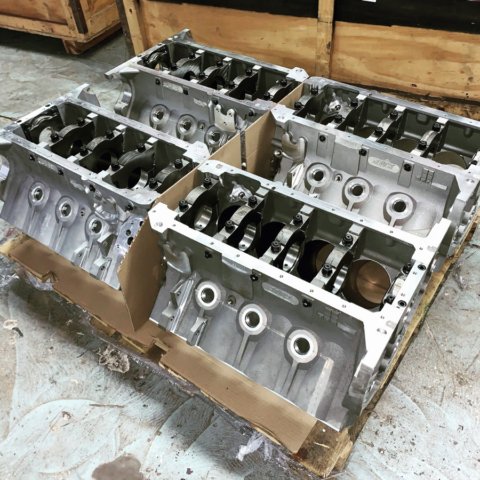


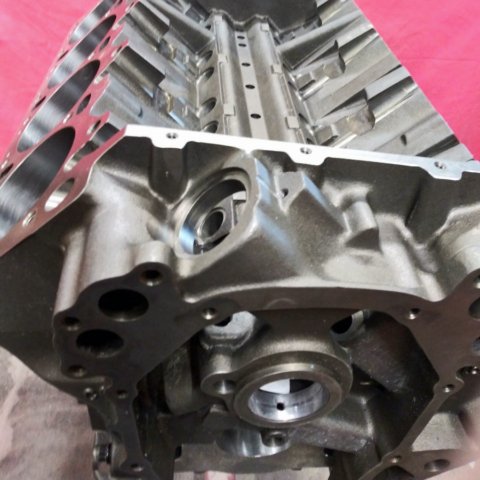




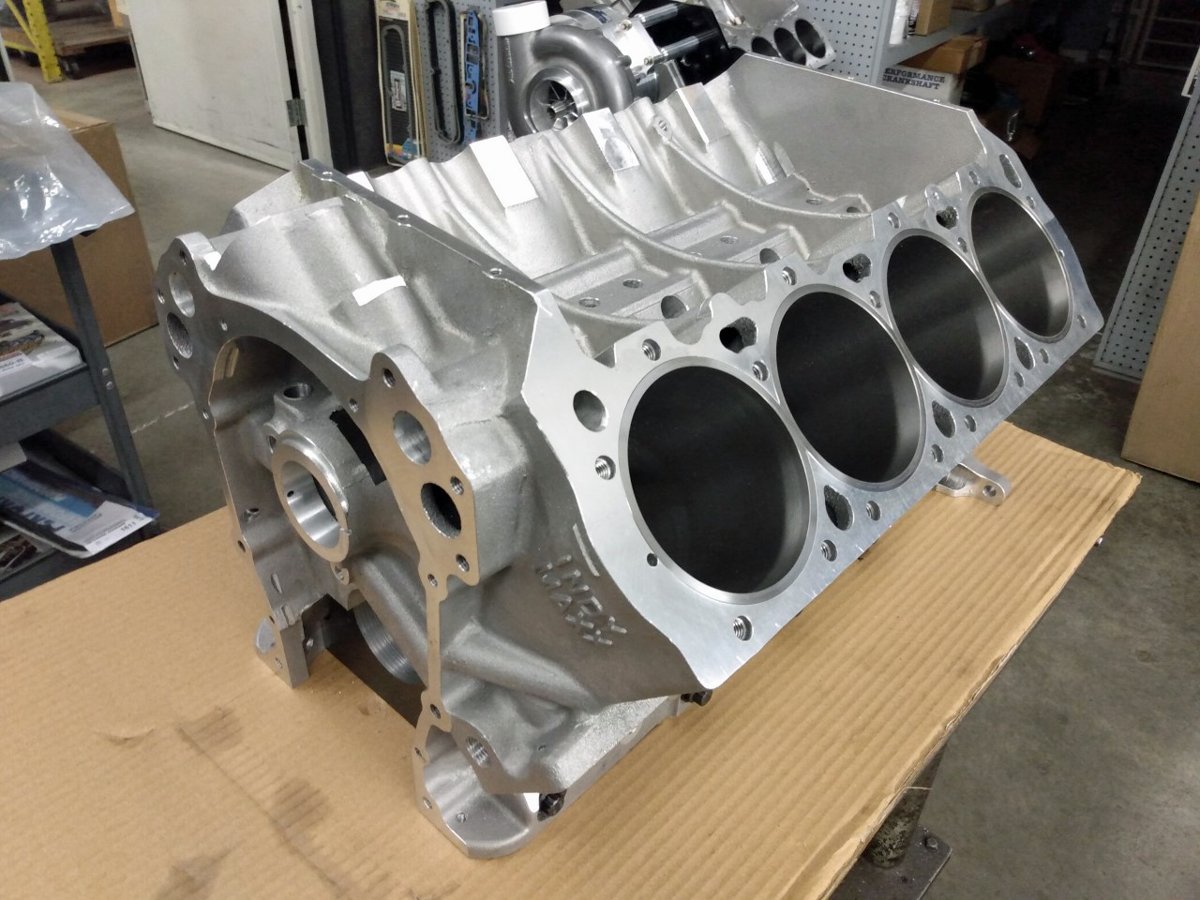
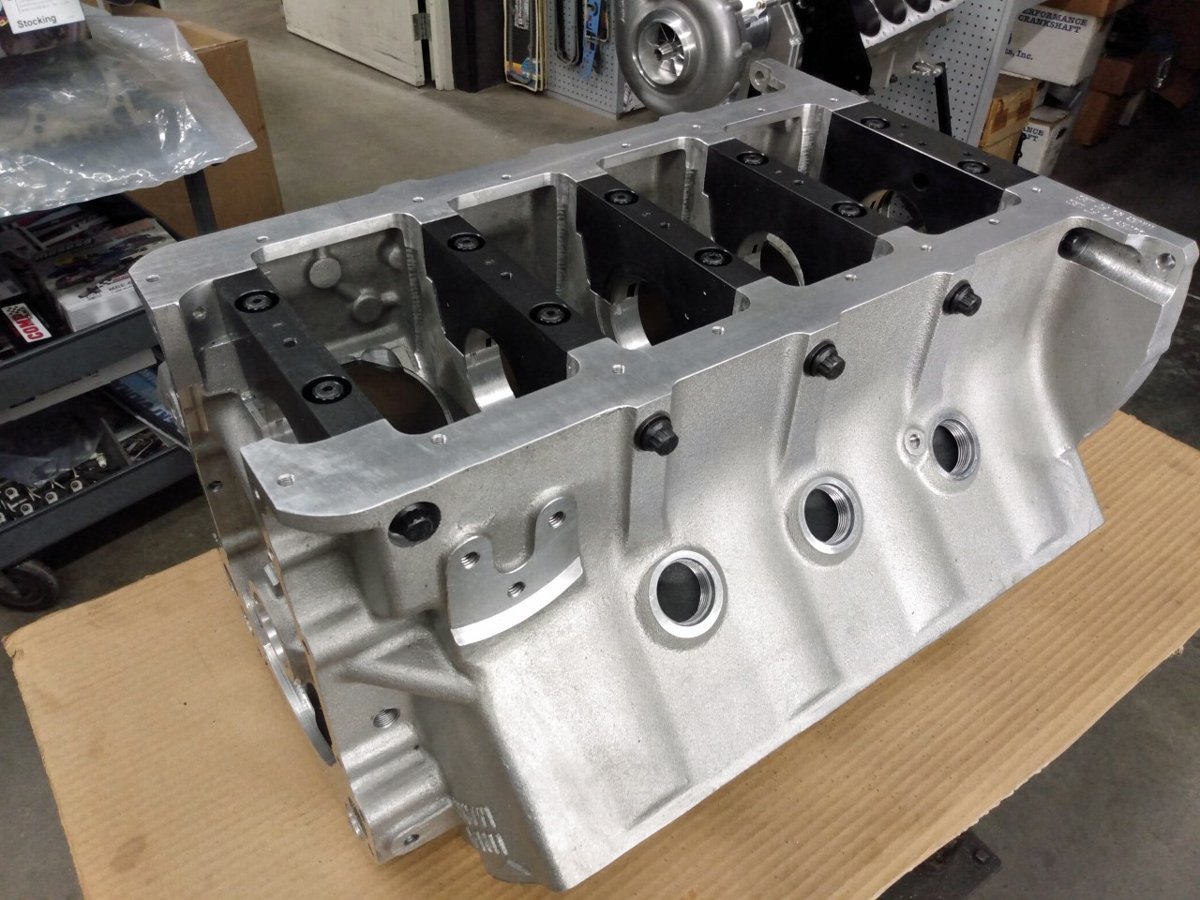



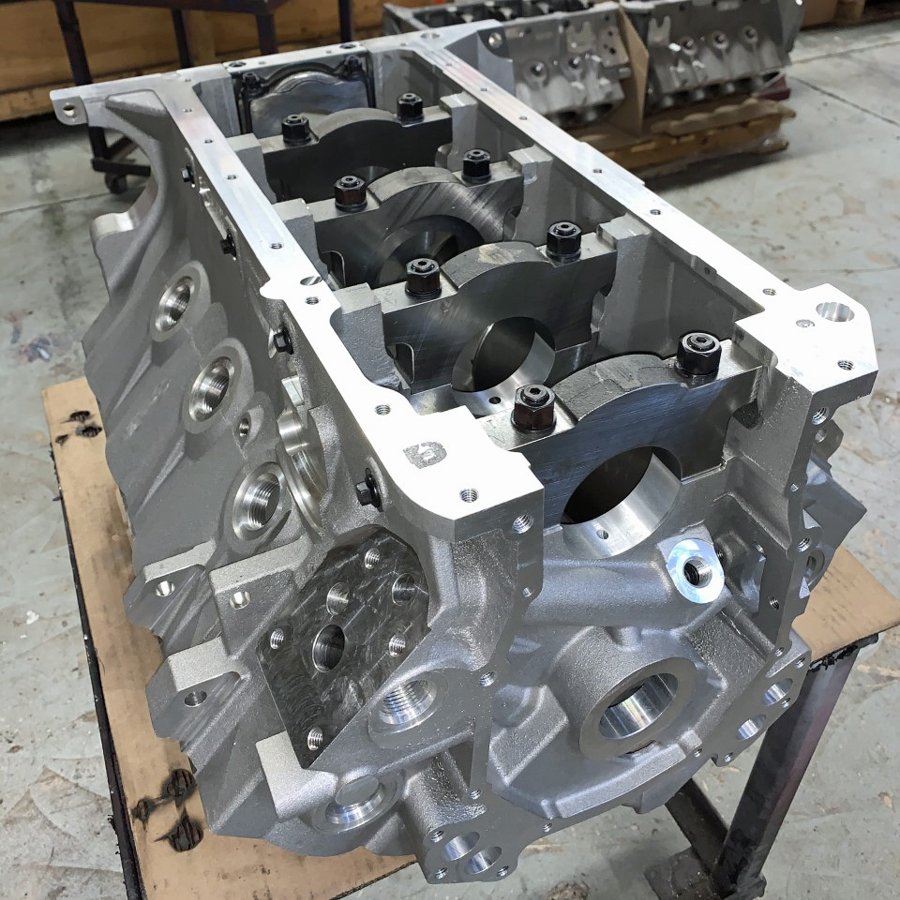

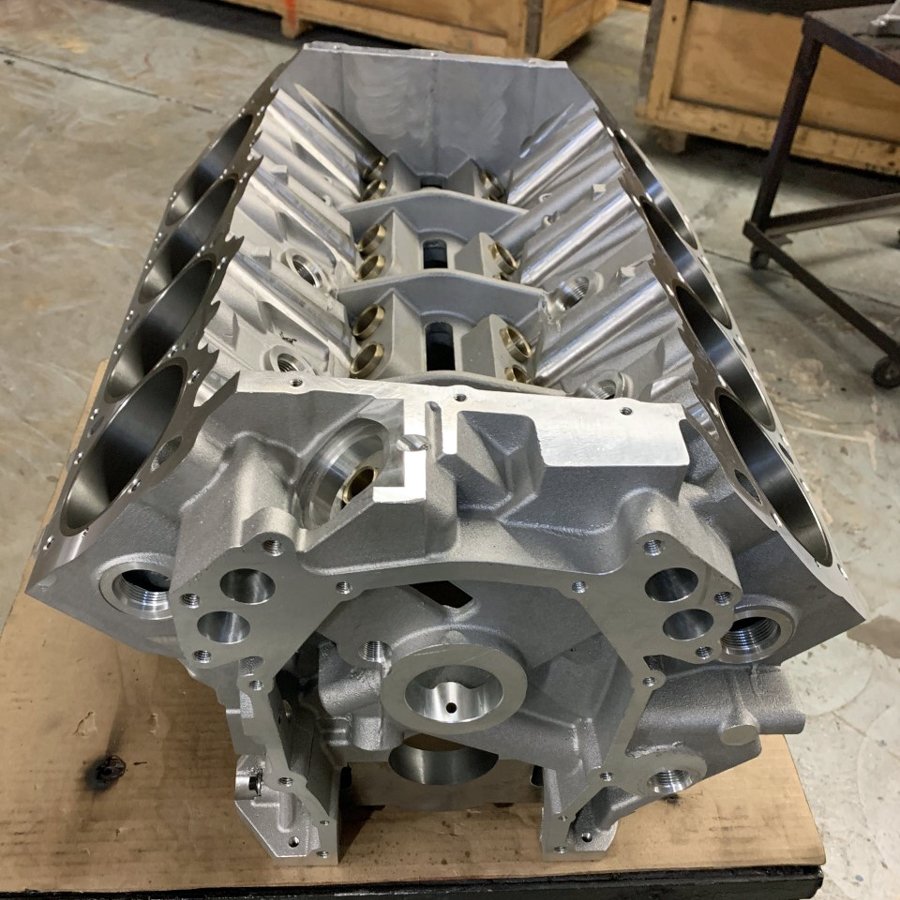


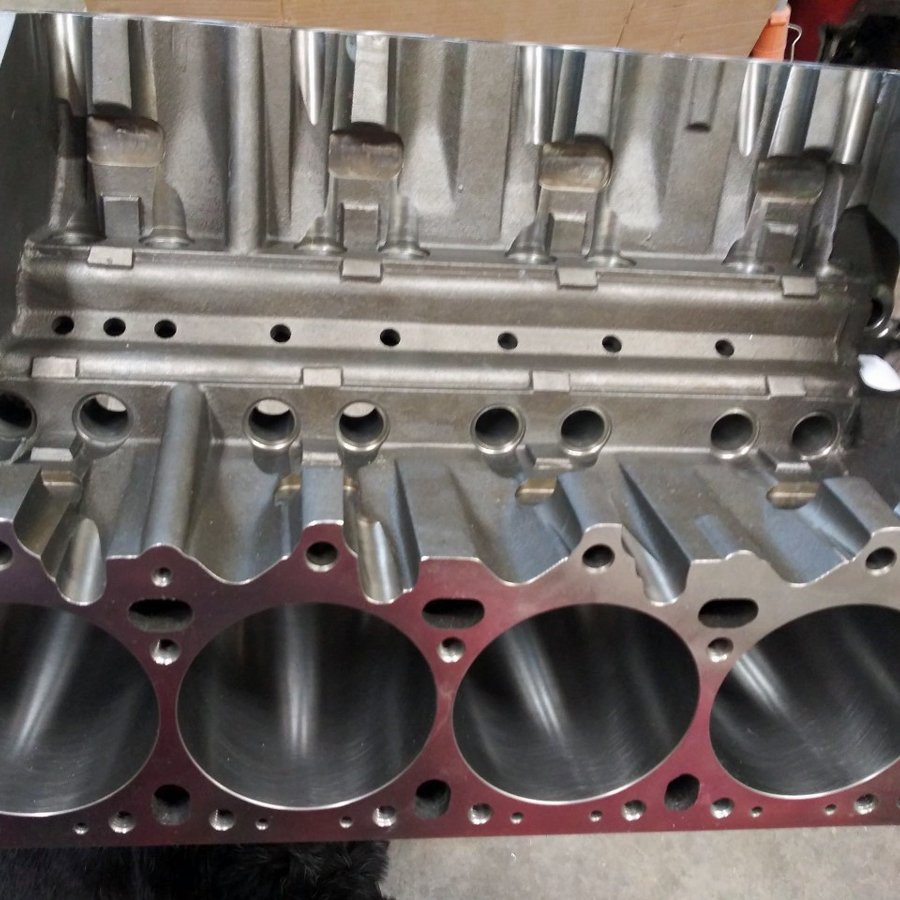
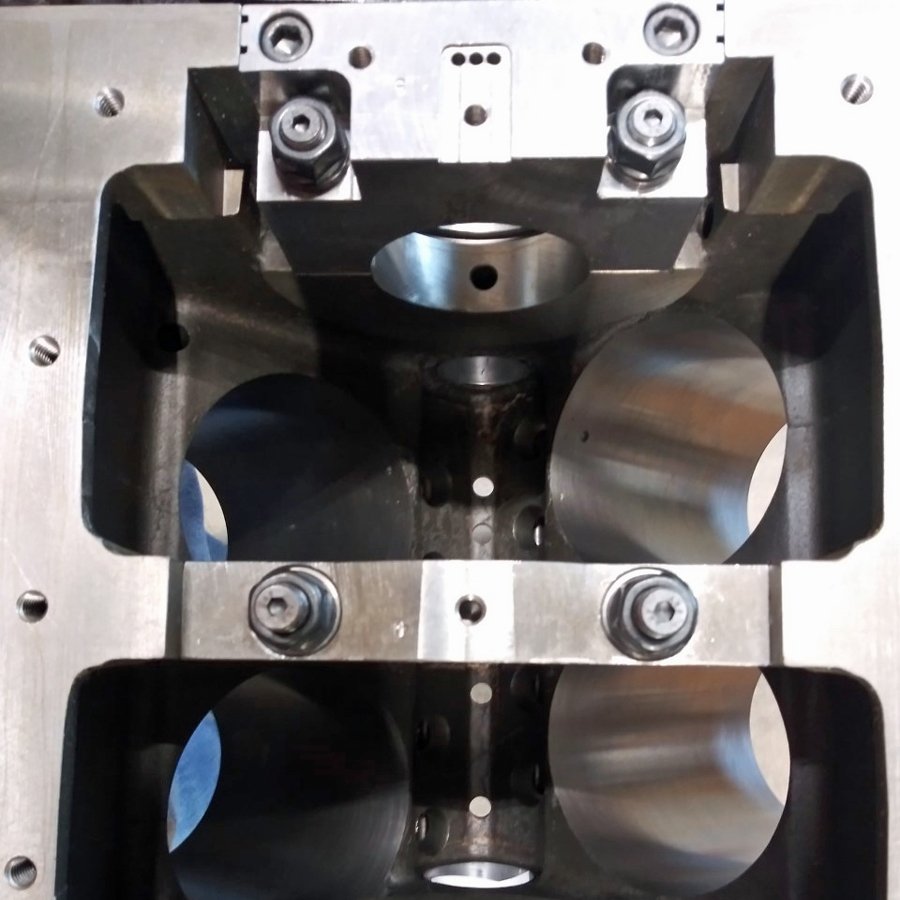
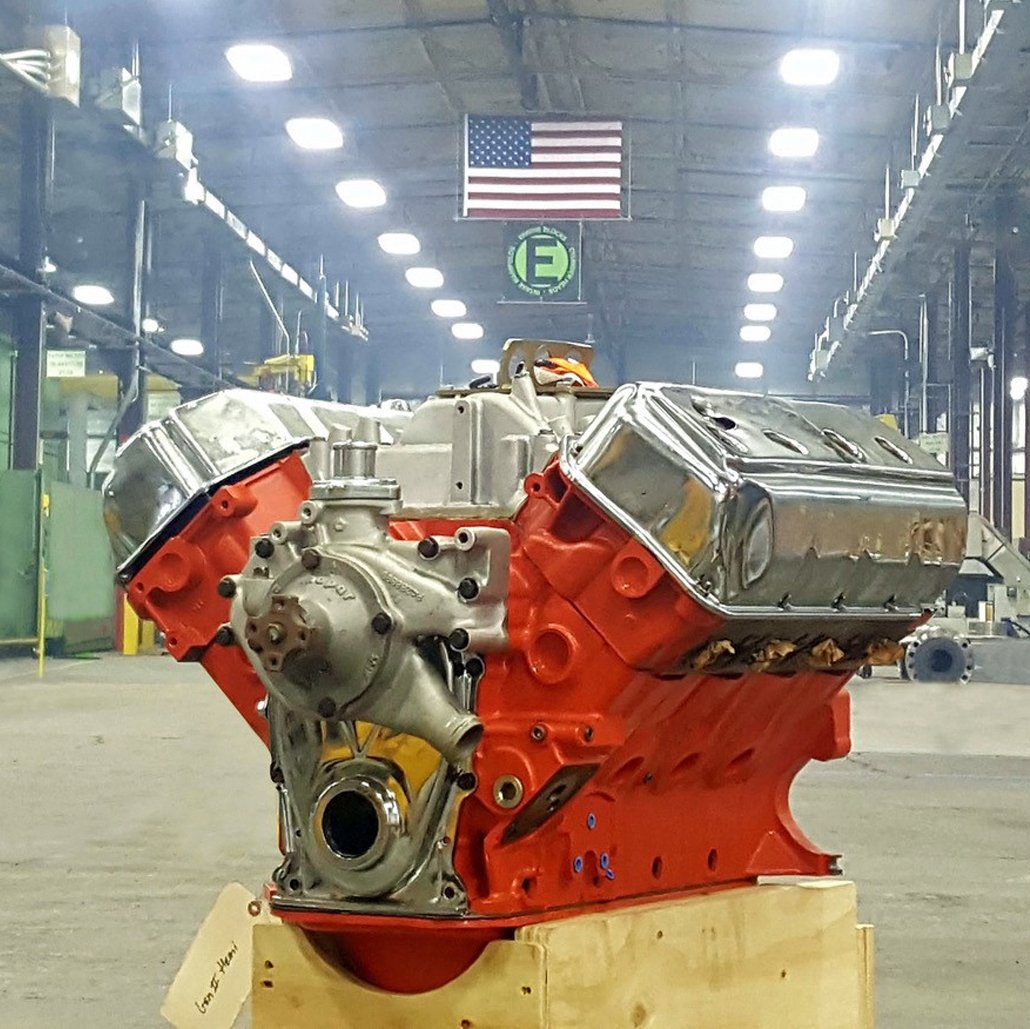

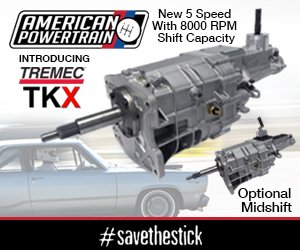

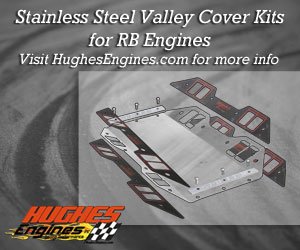
 Mopar Connection Magazine – The ONLY Daily Mopar Magazine © 2022. All Rights Reserved. Mopar Connection Magazine is the ONLY daily Mopar Magazine bringing you the latest Mopar news, technology, breaking news, and Mopar related events and articles. Find out the latest information about Mopar, Mopar products and services, stay up to date on Mopar enthusiast news, dealership information and the latest Mopar social media buzz! Sign up for the Mopar Connection Magazine newsletter for the latest information about new products, services and industry chatter. Mopar Connection Magazine is the best and only source you need to be a Mopar industry insider!
Mopar Connection Magazine – The ONLY Daily Mopar Magazine © 2022. All Rights Reserved. Mopar Connection Magazine is the ONLY daily Mopar Magazine bringing you the latest Mopar news, technology, breaking news, and Mopar related events and articles. Find out the latest information about Mopar, Mopar products and services, stay up to date on Mopar enthusiast news, dealership information and the latest Mopar social media buzz! Sign up for the Mopar Connection Magazine newsletter for the latest information about new products, services and industry chatter. Mopar Connection Magazine is the best and only source you need to be a Mopar industry insider! by
by